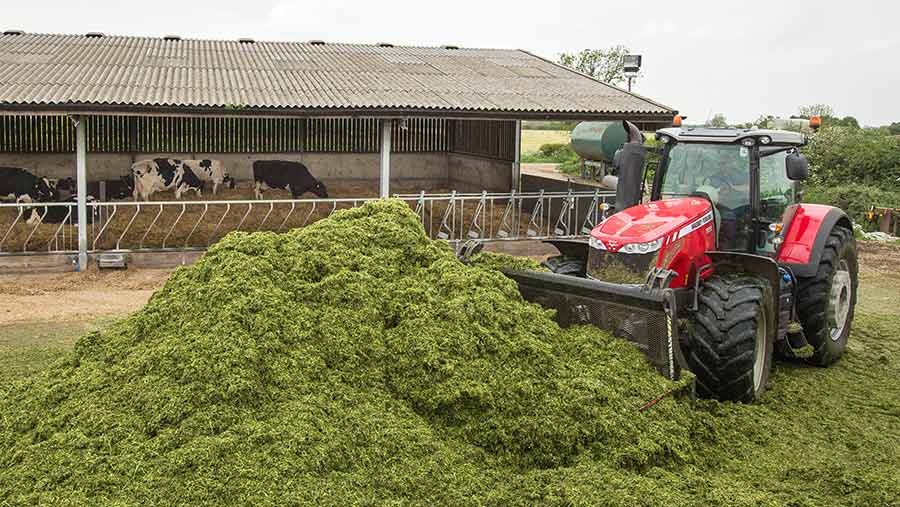

© Hero Images/Getty
Few farmers fully retire, but more are now choosing to step back from the day-to-day business of running a farm by bringing another person into the enterprise.
Joint ventures such as share farming are becoming more commonplace and vary according to circumstances and what each party wants from the arrangement.
Although the structures and terms of each agreement are different, an overarching principle is that both parties must bring something to the mix.
We examine three of the options with John Allen, managing partner at Kite Consulting, and Rob Hitch, partner at accountant and business adviser Dodd &Co.
An arrangement between two independent businesses that share the value of the farm’s output.
There is no standard share-farming agreement – the terms are dictated by the parties involved and by what they both contribute.
The most successful are those involving individuals with complementary resources and skill sets.
What each party provides
The share owner/occupier normally provides the land, buildings, fixed equipment and fixed machinery and pays for the major maintenance of buildings and a proportion of input costs.
The share farmer generally provides the working machinery, moveable equipment and technical ability and pays the balancing cost of inputs.
Livestock are usually held in undivided shares, but can be held in any combination – for instance, one party can hold all the shares.
Output and certain direct costs are split according to agreed allocations.
“In my opinion, it is often simpler for each party to take responsibility for specific costs such as feed or fertiliser, rather than splitting invoices between two parties,’’ says Mr Hitch.
How profits are shared
Share farmers don’t share profits – they share the income in an agreed split and pay their own costs.
Mr Hitch advises the income must be correctly reported in the respective accounts of each party.
Tax and Basic Payment Scheme (BPS) repercussions
Provided “farmer” status is maintained, inheritance tax and capital gains tax reliefs can be retained by the business owner.
The BPS usually stays with the “farmer”, safeguarding part of their income and their tax status.
Share farming provides benefits to the non-landowning partner, as they are also treated as farmers, allowing averaging claims and entitlement to herd-basis treatment of production animals.
Benefits
Best suits…
Advice for setting up this type of agreement
A joint venture between a landowner or occupier and a contractor.
A separate bank account, often referred to as the number two account, is set up to pay for inputs such as feed, fertiliser and chemicals, and to receive income for the agreement.

What each party provides
Typically, the landowner or occupier provides land, buildings and a bank account with an overdraft facility.
The contractor provides labour, power and machinery.
How profits are shared
Each party takes a payment or first charge according to individual risk, although the only guaranteed payment is to the contractor.
After costs are accounted for, any surplus is shared within an agreed ratio.
Tax and BPS repercussions
It allows an individual to continue trading as a farmer with income and inheritance tax advantages.
Unlike share farming, the contractor is not farming and is therefore not entitled to two- and five-year averaging and, where stock are hired to the landowner, it isn’t possible to make a herd-basis election.
The farmer remains the owner of entitlements and is the BPS claimant, but the BPS income is usually paid into the contract farming account.
Benefits
Best suits…
Advice for setting up this type of agreement
Providing equity in a partnership for a joint venture with a family member is a classic route for providing for succession, but it can be fraught with risk.
While partnerships create joint and several liability for decisions and debts, a company structure can avoid this.
Providing equity through a company, or limited-liability partnership structure, is often a better vehicle and one that can apply to key employees, advises Mr Allen.
“We increasingly come across businesses where owners would like an employee or family member to have a stake in the farming business.
“Specialist advice is needed, but the corporate structure is well recognised and offers a number of solutions to owners wishing to retain and motivate key individuals in their business, whether employees or family members.”
What each party provides
Within the company structure, all assets are owned by the company.
Each party contributes cash in the form of equity or loans in proportion to their shareholdings.
Small shareholdings, without controlling interests, will be heavily discounted on an ordinary share valuation, so can be given without any real transfer of value.
“If you want to incentivise people, however, removing this discount and setting out valuation procedures in a shareholders agreement is key,’’ says Mr Hitch.
Care must be taken in restricting rights to shares, he advises, as it could restrict capital gains tax reliefs on any future disposal.
How profits are shared
All shareholders have a share of the profits in the growing business, allocated according to the size of their shareholding.
Directors decide whether to distribute this profit or retain it in the business.
Tax and BPS repercussions
Corporate tax rates are substantially lower, and set to fall further, for profitable farming businesses, so this model suits larger-scale operations.
Transferring shareholdings in existing companies is likely to bring capital gains tax complications, but often holdover relief is available to deal with gifts.
“We see plenty of farmers selling shares to employees, which obviously brings tax implications,’’ says Mr Hitch.
BPS is included within the farming business.
Benefits
Best suits…
Advice for setting up this type of agreement